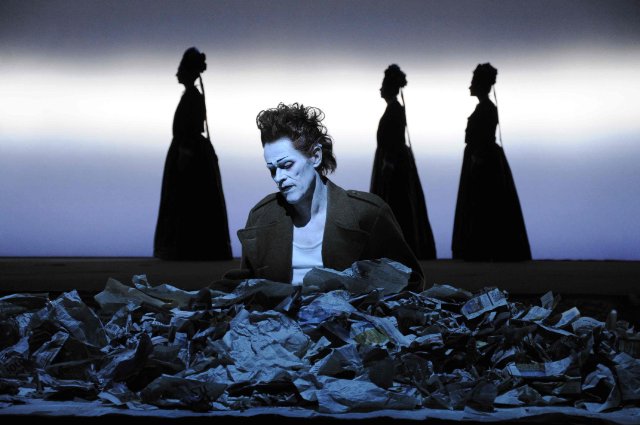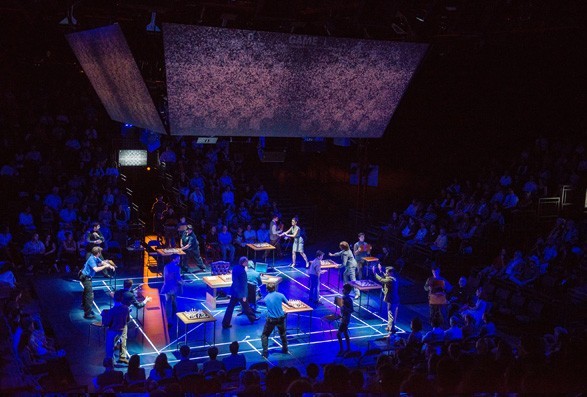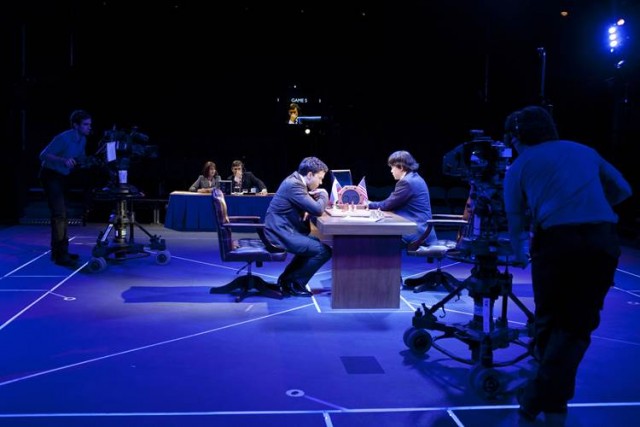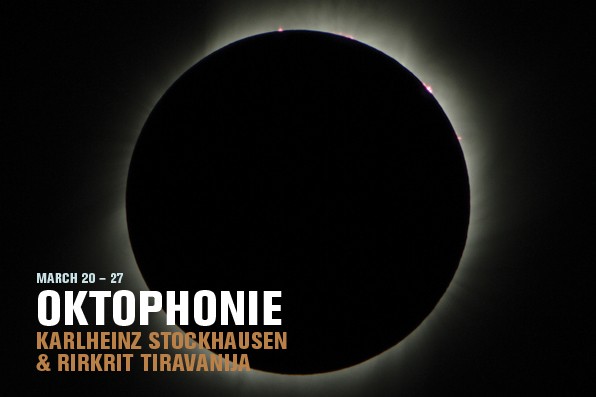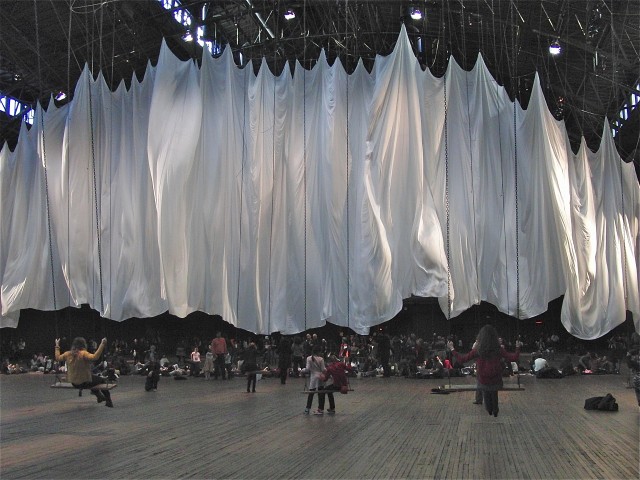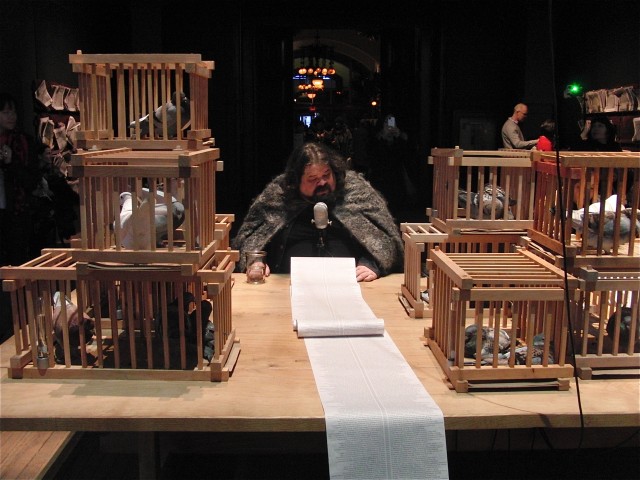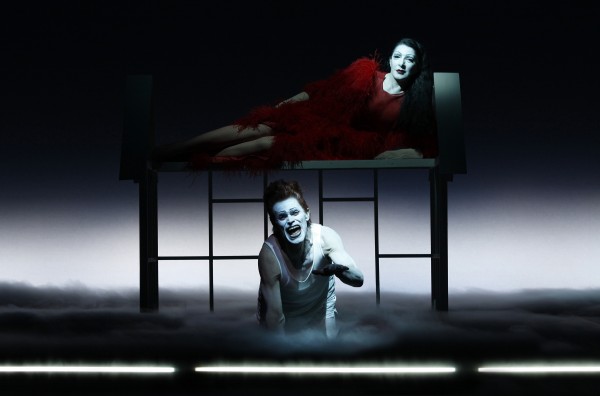
Willem Dafoe and Marina Abramović examine the seminal performance artist’s life — and death — in Robert Wilson spectacle (photo © Lucie Jansch)
Park Avenue Armory, Wade Thompson Drill Hall
643 Park Ave. at 67th St.
Through December 21, $135, 7:30
212-933-5812
www.armoryonpark.org
As the audience enters the Park Ave. Armory’s massive Wade Thompson Drill Hall to find their seats in the rising bleachers, three figures are already onstage, a trio of white-faced women representing Marina Abramović lying in coffins, motionless, hands clasped over their chests. On each seat is a copy of the Seventh Regiment Gazette newspaper, which announces, “Artist Marina Abramović Dies at 67.” Soon three dogs are onstage, sniffing at the red bones scattered around the coffins. For the next two and a half hours, episodes from the life of the seminal performance artist are depicted as only director Robert Wilson can do it: visually stunning and psychologically confounding, gorgeous and infuriating, rousing and frustrating, hysterically funny and annoyingly repetitive. Looking like a cross between Joel Grey in Cabaret,, the Joker from Batman, and the Heat Miser from The Year without a Santa Claus, Willem Dafoe narrates the story, primarily from a heavily littered platform in front of the right-hand side of the stage, calling out biographical tidbits from Abramović’s professional and personal life, some of which are then played out with a cast that includes Abramović first as her domineering mother, then as herself. Tales of her family being the first in their neighborhood in the former Yugoslavia to have a washing machine, her mother throwing an ashtray at her head, Marina considering getting a nose job, and her breakup walk with Ulay across the Great Wall of China are accompanied by music by Baby Dee, Scott Joplin, Paul Anka, and others, original compositions by William Basinski, and live performances of haunting songs by musical director, composer, and lyricist Antony, looking robust in a large, dark gown, and the Svetlana Spajić Group. The compelling second act is far more successful than the disappointing first, with a less abstract narrative and greater involvement from Dafoe. It is of course a visual spectacle, with wild costumes by Jacques Reynaud, crazy makeup by Joey Cheng, fab lighting by A. J. Weissbard, and video projections by Tomasz Jeziorski that feature snippets of some of Abramović’s durational performances. Although clear connections can be made between events in Abramović’s childhood and certain works, especially those that involve physical attacks on her body, The Life and Death of Marina Abramović is not meant to be mere biography, autobiography, or obituary; instead, it is another unique and unusual collaborative performance in a provocative career that has been experiencing a quite a resurgence over the last decade, with more to come.
